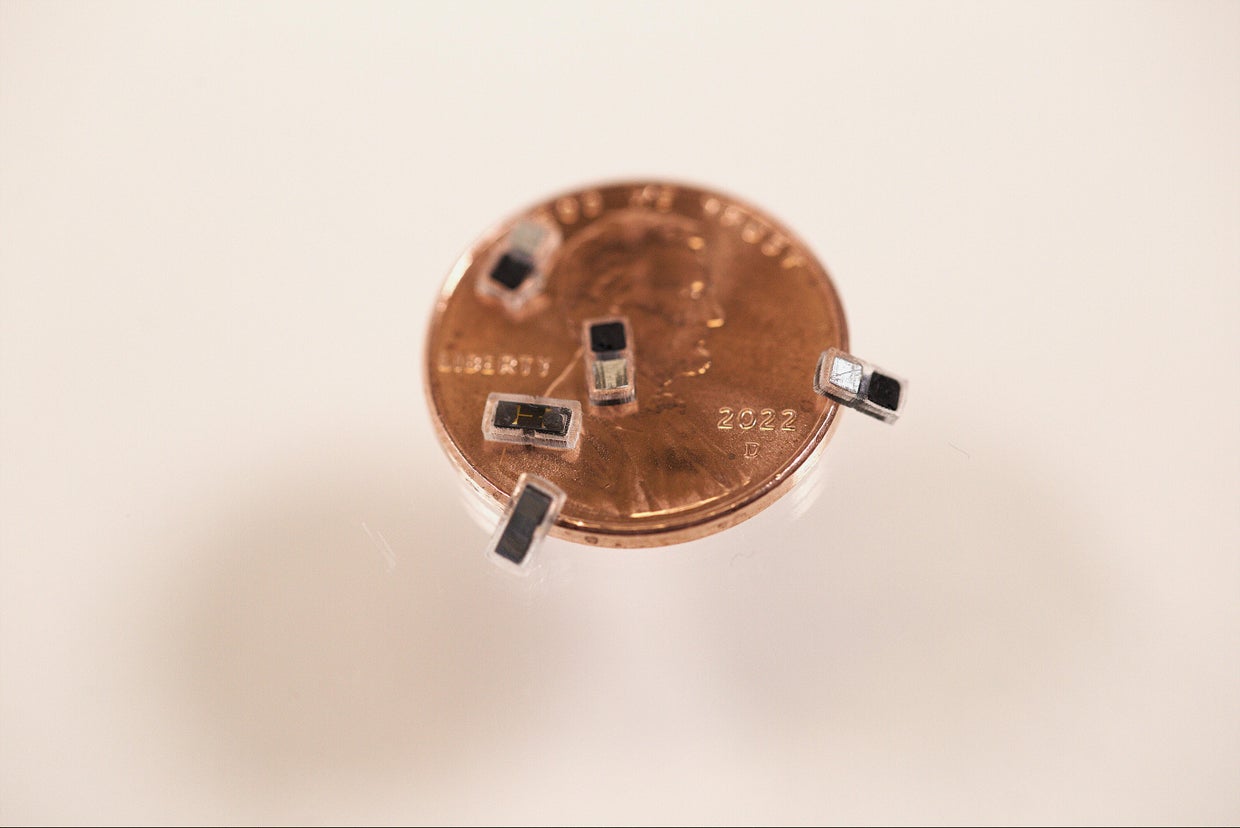Northwestern University scientists develop world's smallest pacemaker, geared toward babies
Scientists at Northwestern University unveiled the world's smallest pacemaker.
The device is smaller than a grain of rice — and is suited particularly to help newborn babies with congenital heart defects. It can also serve as a safer option for adults.
Scientists said the device pairs with a wearable device that detects an irregular heartbeat. When it does, it shines a light pulse that activates the pacemaker.
The pacemaker can be injected into the body with a tiny syringe, and dissolves after it is no longer needed.
Northwestern also noted that the pacemaker is powered by body fluids. It uses a galvanic cell — a simple battery that converts chemical energy into electrical energy.
Specifically, two different metals serve as electrodes to send electrical pulses to the heart, and those electrodes form a battery when in contact with surrounding biofluids that act as conducting electrolytes, the release said.
"We have developed what is, to our knowledge, the world's smallest pacemaker," Northwestern bioelectronics pioneer John A. Rogers, who led the device development, said in a news release. "There's a crucial need for temporary pacemakers in the context of pediatric heart surgeries, and that's a use case where size miniaturization is incredibly important. In terms of the device load on the body — the smaller, the better."
Northwestern experimental cardiologist Igor Efimov, who co-led the study demonstrating the efficacy of the pacemaker, said the main motivation was children.
"About 1% of children are born with congenital heart defects — regardless of whether they live in a low-resource or high-resource country," Efimov said in the release. "The good news is that these children only need temporary pacing after a surgery. In about seven days or so, most patients' hearts will self-repair. But those seven days are absolutely critical. Now, we can place this tiny pacemaker on a child's heart and stimulate it with a soft, gentle, wearable device. And no additional surgery is necessary to remove it."








